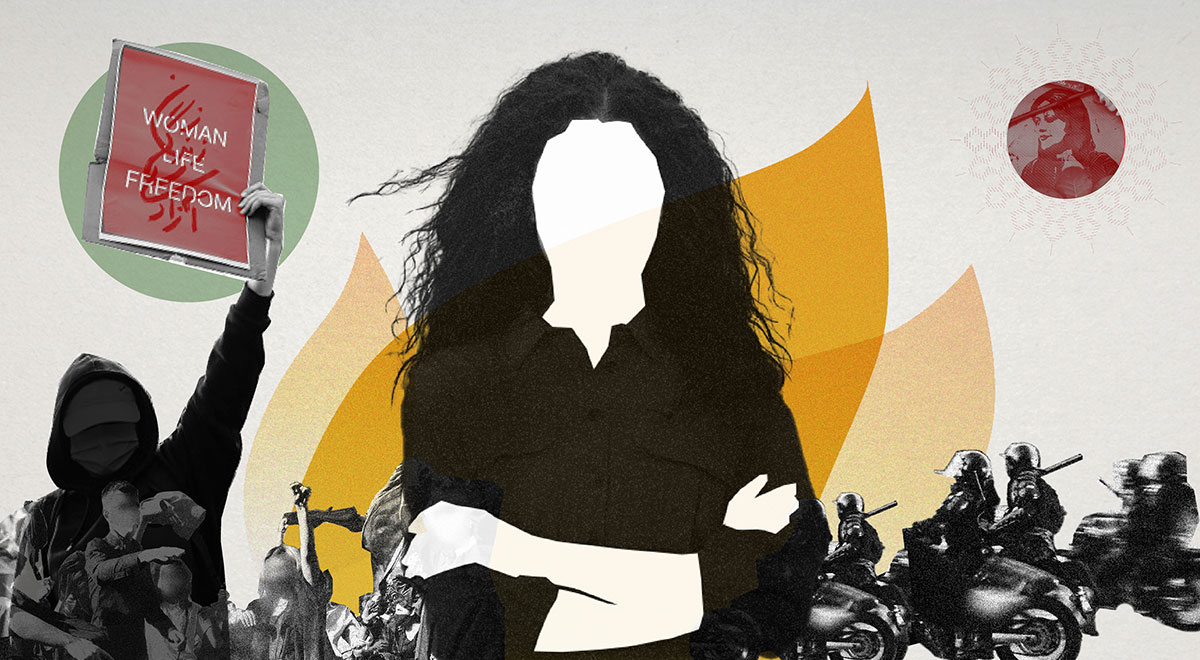The US plan to revamp the Palestinian Authority is doomed to fail
For two months now, the United States and other Western countries, backing Israel, have been talking about “the day after” in Gaza. They have rejected Israeli assertions that the Israeli army will remain in control of the Strip and pointed to the Palestinian Authority (PA) as their preferred political actor to take over governance once the war is over.
In so doing, the US and its allies have paid little regard to what the Palestinian people want. The current leadership of the PA lost the last democratic elections held in the occupied Palestinian territory in 2006 to Hamas and since then, it has steadily lost popularity.
In a recent public opinion poll by the Palestinian Center for Policy and Survey Research (PSR), some 90 percent of respondents were in favour of the resignation of PA President Mahmoud Abbas, and 60 percent called for the dismantling of the PA itself.
Washington is undoubtedly aware of the low public trust in the PA, but there is a reason why it insists on supporting its takeover of Gaza: its leadership has been a reliable partner for decades in maintaining a status quo in the interests of Israel. The US would like that arrangement to continue, so its backing for the PA may be accompanied by an attempt to revamp it in order to solve its legitimacy problem. But even if this effort succeeds, it is unlikely the new iteration of the PA would be sustainable.
A reliable partner
Perhaps one of the main factors that has convinced the US that the PA is a “good choice” for post-war governance in Gaza is its anti-Hamas stance and willingness to conduct security coordination with Israel.
Since the commencement of the conflict between Israel and Gaza on October 7, the PA and its leadership have not issued an official statement offering explicit political support for the Palestinian resistance. Their rhetoric has predominantly focused on condemning and disapproving of attacks on civilians on both sides, while also rejecting the expulsion of Palestinians from their homeland.
In a political address on the ninth day of the war, Abbas criticised Hamas, asserting that their actions did not represent the Palestinian people. He emphasised that the Palestine Liberation Organization (PLO) is the sole legitimate representative of the Palestinian people and underscored the importance of peaceful resistance as the only legitimate means to oppose Israeli occupation. This statement was later retracted by his office.
In December, Hussein al-Sheikh, a PA official and secretary-general of the executive committee of the PLO, also criticised Hamas in an interview with Reuters. He suggested its armed resistance “method and approach” has failed and led to many casualties among the civilian population.
The stance of the PA is consistent with its own narrow political and economic interests which have come at the expense of the Palestinian national cause. It has systematically and brutally stamped out any opposition and any support for other factions, including Hamas, in order to maintain its rule over West Bank cities while Israel continues with its brutal occupation and dispossession of the Palestinian people.
In Israel’s war on Gaza in 2008–2009, the PA leadership hoped to regain administrative control of Gaza with assistance from Israel. During that conflict, the PA prohibited any activities in the West Bank in support of Gaza and threatened to arrest participants. I, myself, faced harassment and the threat of arrest for attempting to join a demonstration against the war. Similar positions were adopted by the PA, albeit with less aggressive measures, in subsequent Israeli assaults on Gaza, as its leadership came to recognise that Hamas was unlikely to relinquish its control over the Strip.
Since October 7, the PA has taken a bolder stance, marked by more aggressive actions. Its security forces have suppressed demonstrations and marches held in support of Gaza, resorting to shooting live ammunition at participants. Additionally, the PA has recently detained individuals expressing support for the Palestinian resistance.
While cracking down on Palestinian protests, the PA has done nothing to protect its people from attacks by Israeli settlers on Palestinian communities, which have resulted in deaths, injuries and the displacement of hundreds of people in the occupied West Bank. Additionally, the Israeli army has intensified its raids in the PA-administered areas, leading to the arrest of thousands and the killing of hundreds of Palestinians, with no reaction from the PA.
The PA’s inability to offer basic protection has added to the deterioration of its legitimacy among Palestinians. Furthermore, by taking a stance against the Palestinian resistance and aligning itself with Israel and the US, the PA is only further undermining its own legitimacy.
PA 1.0 and PA 2.0
Washington is aware of the growing unpopularity of the PA and its leadership among Palestinians but it is not giving up on it because it seems to believe that that can be fixed. That is because the US has tried to revamp the authority before as it has always faced problems with legitimacy due to the way it was set up.
As a governing institution, the PA was established to bring an end to the first Intifada. Conceived under the interim peace agreements in Oslo, it was envisioned as an administrative body to oversee civil affairs for Palestinians in the occupied Gaza Strip and certain parts of the West Bank, excluding occupied East Jerusalem.
It effectively took on a role as an Israeli security contractor in exchange for certain benefits related to administering Palestinian population centres. The PA faithfully fulfilled its mandate, carrying out routine arrests and surveillance of Palestinian individuals, whether they were involved in actions against Israel or were activists opposing its corrupt practices.
Thus, Israel strategically benefitted from the establishment of the PA, but the same cannot be said for the Palestinian people, as they continued to experience the ravages of a military occupation.
Despite this, the PA under Yasser Arafat – or what we can call PA 1.0 – leveraged patronage and corruption to maintain some level of support. Notably, Arafat viewed the Oslo process as an interim measure, expecting a fully independent Palestinian state by 2000. He pragmatically engaged in security collaboration with Israel, hoping to build trust and ultimately achieve peaceful coexistence. In 1996, responding to ongoing Palestinian resistance, he even declared a “war on terror” and convened a security summit in Sharm el-Sheikh, involving Israel, Egypt and the US.
In 2000, the civil and security arrangements overseen by the PA became increasingly fragile and eventually collapsed, triggering the eruption of the second Intifada. This uprising was a response to Israel’s policies of settlement expansion, its firm refusal to accept any form of Palestinian sovereignty between the Jordan River and the Mediterranean, and broader social and economic grievances.
In 2002, the Bush administration conceived the idea of refurbishing the PA as part of the Road map for peace. While Arafat’s leadership was perceived as a hindering factor, he had already collaborated with the US by implementing structural reforms, including the creation of a prime minister’s position.
Seeking to reshape the Palestinian leadership, the US engaged with potential alternative leaders, including Mahmoud Abbas, who eventually assumed the presidency of the PA in 2005 after the suspicious death of Arafat.
The PA took its first blow when Hamas won the elections in 2006 and was able to form a government. The US and EU rejected the results, boycotted the government and suspended financial assistance to the PA, while Israel halted the transfer of tax revenues. Meanwhile, the PA security apparatus leadership refused to deal with the Hamas government and continued their work as usual, claiming they reported to the PA president’s office.
For several months, Hamas struggled to maintain its PA government, while Abbas and his supporters made significant efforts to isolate it. In 2007, Hamas took over the PA security apparatus in the Gaza Strip and assumed control of all PA institutions. Abbas declared Hamas an unwanted entity in the West Bank and ordered the expulsion of the Hamas government and the imprisonment of many Hamas operatives.
After splitting the PA into two entities, one in the Gaza Strip and another in the West Bank, Abbas, along with allies Mohammed Dahlan and Salam Fayyad, led efforts to restructure the PA in the West Bank with full support from the US and the EU.
Under what we can call PA 2.0, two major restructuring efforts took place. First, it consolidated the Palestinian security apparatus under a united command. Led by US Army General Keith Dayton, the revamping of the Palestinian security forces aimed at deepening their partnership with the Israeli state and army. Additionally, it sought to cultivate a vested interest among PA personnel in maintaining the role of the PA. Second, the restructuring of the PA consolidated its budget, placing all its resources under the Ministry of Finance.
This restructuring did not result in a “better” PA. It remained a dysfunctional entity, which mismanaged resources and service provision, leading to a severe deterioration in living standards for the majority of Palestinians. Its leadership enjoyed certain privileges due to its security coordination with Israel and engaged in widespread corruption practices that have raised concerns even among PA supporters. Meanwhile, Israel’s settlement enterprises continued expanding without limits and the violence employed by the Israeli army and settlers against ordinary Palestinians only worsened.
PA 3.0?
The lack of support for the PA leadership and its dysfunction have raised concerns about whether it can play a role in the upcoming post-Gaza war arrangements that the US administration is trying to put together.
That is why Washington has signalled it will seek to revamp the PA once again – into PA 3.0 – with the aim of addressing the needs of various parties. The US administration and its allies seek an authority that can provide security to Israel and engage in a peace process without altering the status quo.
Since the start of the war, several US envoys have visited Ramallah carrying the same message: that the PA needs to be revamped. In December US National Security Advisor Jake Sullivan met with Abbas and al-Sheikh (the PLO secretary general) urging them to “bring new blood” into the government. Al-Sheikh is considered a possible successor to Abbas, who could be part of these efforts to restructure the PA.
However, after more than 100 days since the start of the Israeli war on Gaza, it looks like Washington does not have a concrete plan and only has some general ideas which the PA has declared a readiness to discuss. More importantly, the US vision does not seem to take into account the will of the Palestinian people.
The Palestinian public clearly demands a leadership that can head a democratic, national entity capable of fulfilling the Palestinian national aspirations, including creating an independent state and realising the Palestinians’ right of return to their homelands.
Revamping the PA implies intensifying cooperation with Israel and providing Israeli settlers with more security, which effectively means more insecurity and dispossession for the Palestinians. As a result, the Palestinian people will continue to perceive the PA as illegitimate and public anger, upheaval and resistance will continue to grow.
In this sense, the US vision for revamping the PA would fail because it would not address the core issues of Israeli occupation and apartheid, which successive American administrations have systematically and purposefully ignored.
The views expressed in this article are the author’s own and do not necessarily reflect Al Jazeera’s editorial stance.




